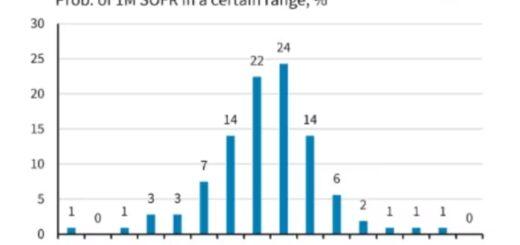Diversification Strategies for Financial Success Beyond S&P 500
You understand the importance of diversifying your resources or investments to prevent them from being concentrated in one place. Nevertheless, it is common to wrongly assume that you have successfully diversified when, in truth, you have not.
In this article, I will show you how intelligent diversification can improve your long-term results and reduce volatility at the same time. No need to worry, adopting this strategy doesn’t take too much effort.
Why diversify at all?
All investments, such as stocks or funds, go through cycles of both growth and decline. During periods of growth, we may feel smart, accomplished, and fortunate. However, during downturns, we may feel confused, unlucky, and perhaps even like we have failed.
Owning an asset that is appreciating can help offset the decrease in value of another asset.
Prudent diversification
Intelligent investors comprehend the significance of safeguarding their money as much as growing it.
The most reliable way to accomplish this objective is to hold both bonds and equities. Nevertheless, this article does not delve into the specifics of this matter. You can obtain the essential understanding from my recent article focusing on this particular subject.
After successfully handling your overall risk, the best long-term results can be achieved through diversification of your equity investments.
Timid diversification
When contemplating diversification, it is often recommended to possess a greater number of stocks as opposed to a smaller amount, as this is a beneficial and successful strategy.
Nevertheless, possessing a greater amount of those stocks might not yield substantial advantages if they are all exceedingly alike.
Undoubtedly, having ownership of all 500 stocks in the S&P 500 SPX reduces the chances of being greatly affected by any specific company’s disaster. However, the index is primarily driven by the stocks of large corporations with significant value. It is typical for these stocks to go through similar price fluctuations.
Powerful diversification
To improve your long-term returns, it is best to spread out your investments across different groups of stocks, each with their own distinct features and anticipated performance.
While I do not recommend putting money into sector funds, they can be used as a simple example.
Airline stocks have a different pattern of behavior compared to retail stocks, just as oil stocks show contrasting trends compared to technology stocks. This trend extends to banking stocks and beyond.
If you only have one sector, you will be at the mercy of unpredictable forces with a lot of influence. However, if you have multiple sectors, it’s very likely that some of them will consistently do well, which will help to balance out any struggles in the others and increase overall returns.
The method mentioned earlier provides a simple way to comprehend diversification. However, a more powerful approach to achieve diversification is to spread investments across various categories of assets.
In the United States, there are four primary categories of assets. These include large-cap stocks that have a combination of growth potential and value, large-cap stocks that are perceived to be undervalued, small-cap stocks that have a mixture of growth potential and value, and small-cap stocks that are deemed to be undervalued.
Index funds and exchange-traded funds can be easily obtained at affordable prices.
I would like to direct your attention to an eye-catching table that illustrates some of the significant projects successfully completed by the Merriman Financial Education Foundation.
The paragraph displays the annual returns for four diverse types of assets from 1928 onwards. It also exhibits the overall performance of these four asset classes together, shown in pink. The performance of the S&P 500 is depicted in green.
If you believe that only relying on the S&P is enough, examine the chart and notice how often those green boxes ended up at the bottom. This suggests that the index was outperformed by all three other types of assets.
At times, these durations were prolonged. The S&P 500 faced a continuous decline for six years starting in 1940, followed by five years beginning in 1964 and again in 1975, and then seven consecutive years from 2000. Moreover, there were also 16 different years where owning the S&P 500 yielded the least favorable results compared to other asset classes. Overall, there were a total of 39 individual years where the S&P 500 performed the worst.
During the early years of the 21st century, the S&P 500, which had previously performed well in the 1990s, faced three consecutive years of financial loss. As a result, many investors became discouraged and completely exited the market. Upon examining the highlighted sections at the beginning of each year, it becomes apparent that there was no sequence of five or more positive years. Analyzing the data portrayed in the chart over a period of 92 years, it is evident that the S&P 500 emerged as the top performer 26 times and the poorest performer 39 times, which is undeniably a disappointing outcome.
For investors to continue being engaged in the market and achieve long-term profitability, they need to feel reassured and have a stable state of mind, similar to experiencing a smooth and uninterrupted journey.
However, within the period shown on this chart, the S&P 500 had 34 occurrences of transitioning between a positive and negative return or the other way around.
This is certainly not a recipe for achieving inner peace.
Considering that it is not feasible to have an investment that will consistently perform better than others, I would like to suggest an alternative that can never be the least favorable due to its inherent characteristics. This option offers stability and the potential for long-term profitability, while avoiding constant changes and uncertainties.
The chart illustrates an investment that consists of four distinct asset classes, represented by the color pink.
Between the years 1928 and 2019, the combination of these four funds consistently performed at an average level for 72 out of 92 years. This led to a notable decrease in volatility. Additionally, starting from 1928, it outperformed the S&P 500, yielding better returns.
if you think that all parts of the American stock market usually go up and down at the same time, you might be shocked to find out that there have been a total of 17 years where the difference in how well different types of investments performed was more than 30 percentage points. To give an example of this,
- In 1967, the difference between two values was 55.1 percentage points.
- There was a 40.2% difference in 2001.
- The difference in percentage points in 2003 was 37.4.
I firmly believe that it is crucial to diversify investments beyond the S&P 500 by including small-cap value stocks. The graph provided illustrates one of the factors supporting this belief: in most years, there is a considerable gap of 30 percentage points or higher between the top and bottom performing stocks. Small-cap value stocks have consistently outperformed the S&P 500 in this regard.
I understand that not everyone finds small-cap value stocks appealing as an investment option. Nonetheless, I firmly believe that incorporating these stocks, along with three other types of assets, can be an excellent alternative to solely investing in the S&P 500. This combination not only offers a more reliable investment path that minimizes risk, but also delivers superior returns.
Since 1928, the four-fund combination has experienced a compound annual growth rate of 11.7%, which is 1.9% higher than the growth rate of the S&P 500 at 9.8%.
If that doesn’t appear to be important, examine the statistics presented in the table provided.

Over a period of 30 years, there was a growth of 67.3%.
Would you like to know more? In a recent article earlier this year, I talked about seven easy-to-follow investment portfolios that have consistently outperformed the S&P 500 for more than fifty years.




